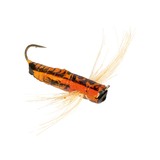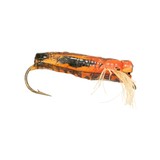 |
 |
 |

Bunyan Bug Trout Fly
Guns International #: 101901632 Seller's Inventory #: AG0115
Category: Fishing Equipment - Collectibles - Sporting
Seller's Information
When emailing or calling sellers direct, please mention that you saw their listing on GunsInternational.com
Seller: Cisco's Gallery
Company: Ciscos Gallery
Member Since: 9/2/16
First Name: Sam
Last Name: Kennedy
State: Idaho
Zip: 83814
Country: United States
Phone: (208) 769-7575
Fax: (208) 769-7575
Platinum Seller
Number of Active Listings: 560
Total Number of Listings: 6978
Seller: Private Seller
Return Policy: 3 day inspection and return policy on used guns.
Payment Types Accepted: Visa, Mastercard, certified funds, cashiers checks, money orders, and personal checks (items shipped when cleared). 3% surcharge on firearm purchases made with a credit card.
About Us: Cisco’s Rare & Exceptional deals in one-of-a-kind pieces that define America and the Wild West. The collection is both diverse and expansive, including historic antique western firearms, artifacts, antiques, fine art, and western home furnishings. Our store, located in scenic Coeur d’Alene, Idaho, is filled from floor to ceiling with pieces that spark romantic tales of the western frontier. Cisco’s inventory of authentic Native American art and artifacts is among the finest in the world featuring Navajo rugs, baskets, beadwork, totems, pipes, southwest jewelry and more!
Description:
Trout fly bunyan bug made by Meams, the same as used in the movie "A River Runs Through It." Like many urban ledgends, there is some truth to at least parts of all of them. The fly supposedly was suggested by Norman Maclean (who wrote the book) and created by Norman Edward Lee Means, both men of Missoula, Montana. Or it could have been vise-versa. At any rate most will agree the Bunyan Bug was designed to imitate the Salmon Fly, a very popular hatch. Bigger was better. The first Bunyan Bugs appeared in about 1929, and were all hand painted. Later, production models were made with a decal (fine tissue) which was lacquered in place making the paper disappear, leaving just the image. These flies were tied with the only materials available. Long before the advent of 'modern' tying materials, they were created and improved upon at a far slower pace than todays modern counterparts; limited by materials available and the tiers imagination. Once long gone, there existed a 'fraternity' of anglers who felt an obligation to use only the 'standard' patterns of the day. We hope to bring a bit of nostalgia to these pages and to you. And sometimes what you find here will not always be about fishing. Perhaps you will enjoy them. Perhaps you will fish the flies. Perhaps?
SOLD